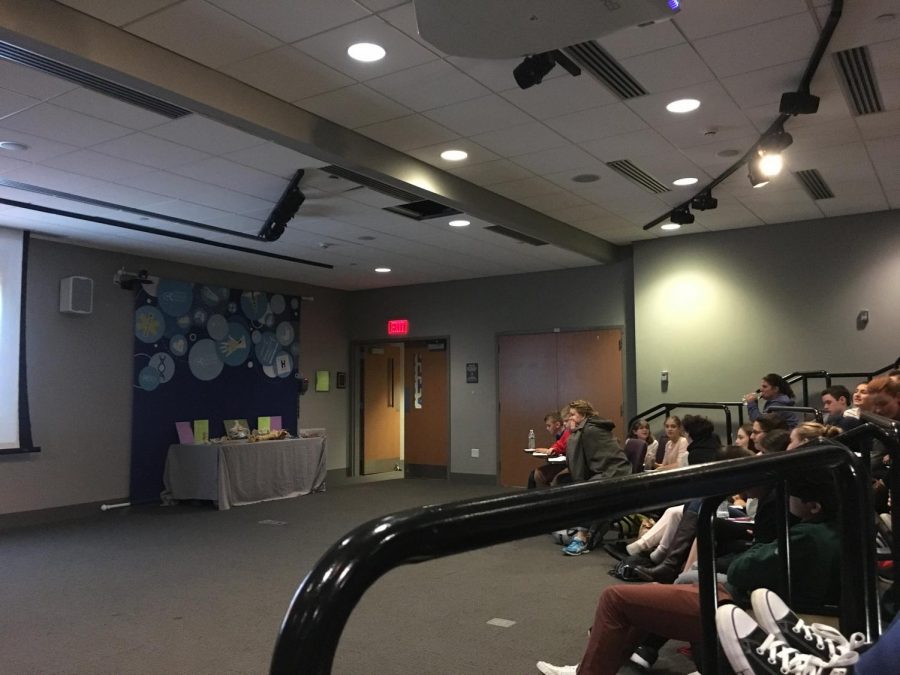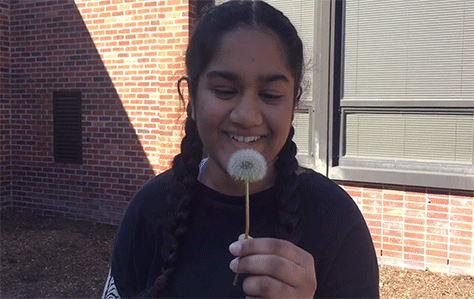Anatomy students watch live neurosurgery
Photo Credit: Githmie Goonatilleke
Students from five different schools watch a live neurosurgery at Liberty Science Center. The surgery, which was part of the Live From Surgery program, was a Transforaminal Lumbar Interbody Fusion.
December 6, 2017
Anatomy students joined five other schools to watch a live neurosurgery at Liberty Science Center on Tuesday.
According to Liberty Science Center, the Live From Surgery program “offers students a unique opportunity to peer into an operating room and interact with medical experts.”
The surgery, which lasted approximately four hours, took place at Overlook Hospital in Summit, NJ and was livestreamed to the science center so that the students could watch in awe and slight disgust.
“All of the operating team wears a camera and a microphone. So we see it from their perspective,” said Jennifer Ammirata, an anatomy and biology teacher. Ammirata accompanied the students on the field trip alongside Mr. Lyon.
This is the fifth time students have visited Liberty Science Center to watch a live surgery. However, instead of a neurosurgery, students had seen a kidney transplant in previous years.
The surgery that the students watched was a transforaminal lumbar interbody fusion (TILF) with a redo far lateral disectomy. The goal of the surgery was to remove disc material from a 62-year-old male with lumbar degenerative disc disease, a syndrome in which a compromised disc causes low back pain. The removed discs were replaced with a titanium cage.
The lead surgeon, Dr. Adam Lipson, had previously performed a lumbar disectomy on the same patient in May 2016 and the patient had done well for a month before the pain returned.
Lipson is a board certified neurosurgeon who specializes in brain tumors, pituitary tumors and minimally invasive techniques for spinal surgery. Assisting Lipson was second surgeon Dr. Richard Hodosh, anesthesiologist Dr. Blaze McLaughlin, and a few scrub nurses, circulating nurses and technicians.
Prior to seeing the livestream, the students were not told what type of surgery they would be watching.
“It wasn’t specified if it was spine surgery or brain surgery so I thought we were going to watch a brain surgery but it was still pretty interesting to see the spine,” Senior Amy Pfeiffer said.
Throughout the livestream, Lipson and the other members of the operating room answered questions, both procedural and general, that students in the audience had.
When asked whether he would go through the difficult process of med school and residency Lipson said, “without question. I love what I do. I have a lot of other hobbies that I love but this is the most rewarding. There’s nothing better than seeing a happy healthy patient.”




